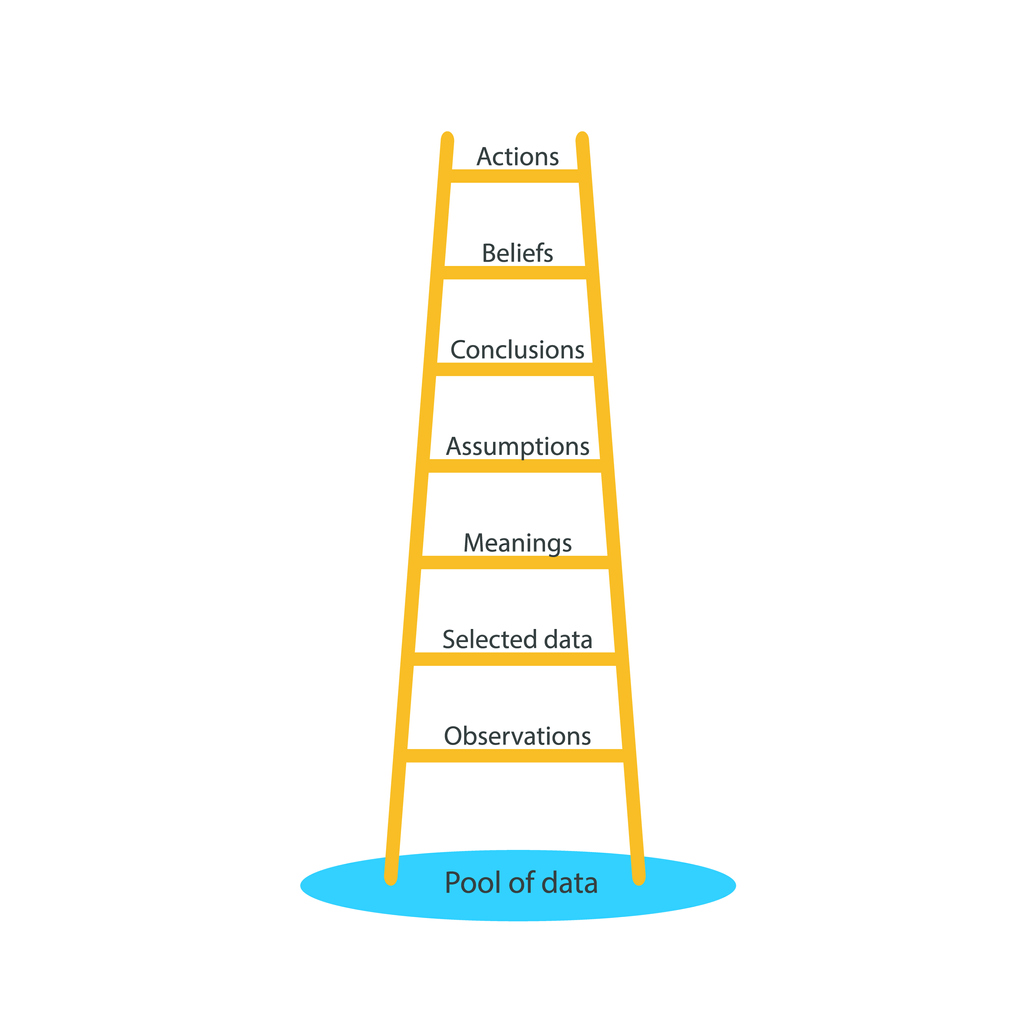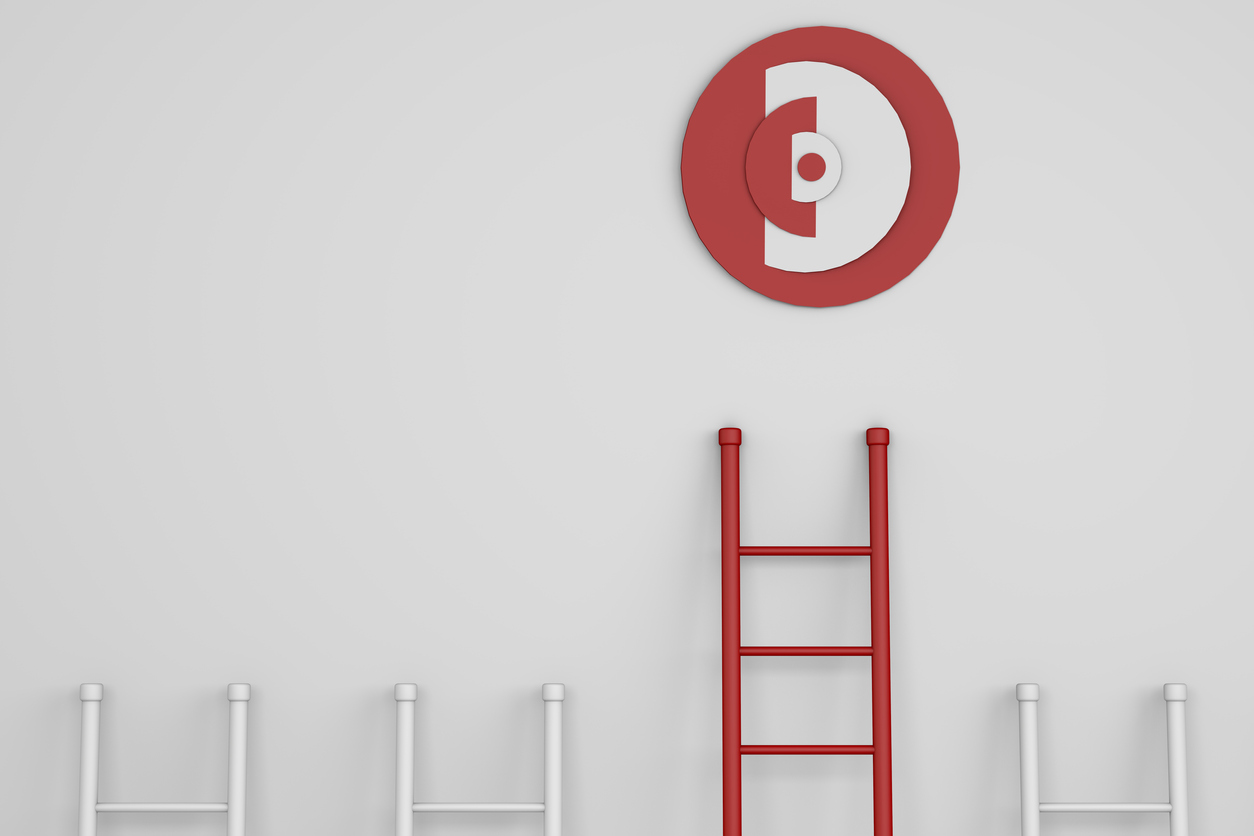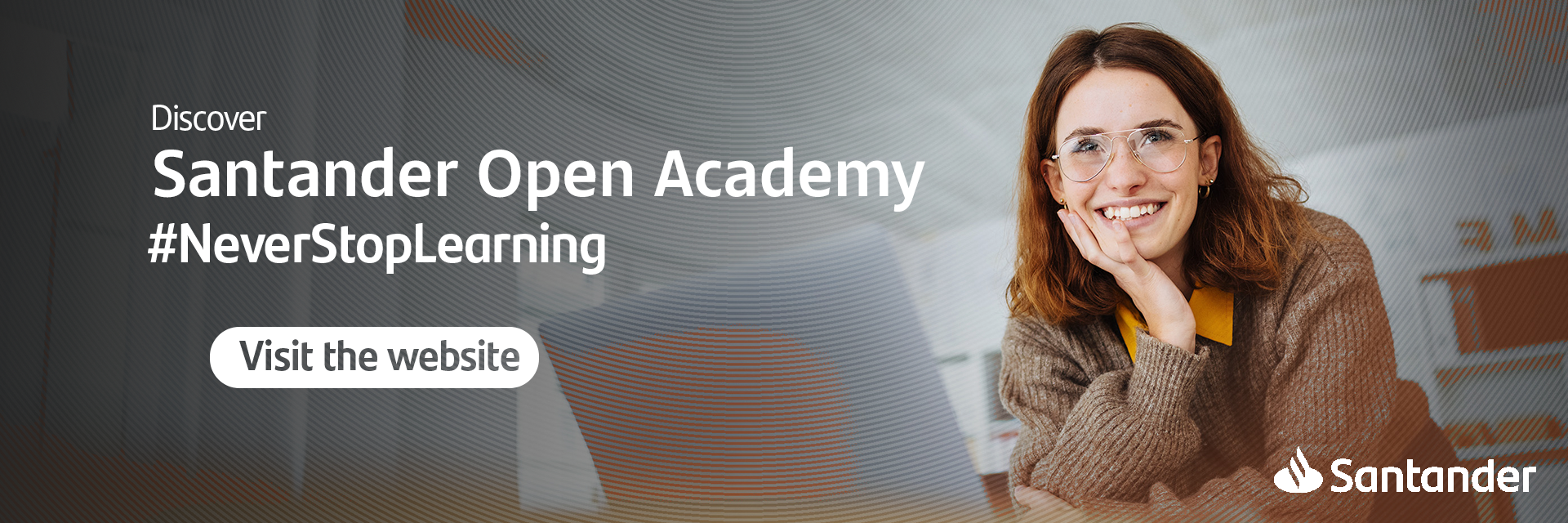What is the Ladder of Inference and how can it help us make better decisions?
“Calm—indeed the calmest—reflection might be better than the most confused decisions”. This quote by Franz Kafka, one of the most influential writers of the 20th century, perfectly expresses the intention behind the explanatory model known as the ladder of inference, a technique that can help us make better decisions and avoid making assumptions or mistakes.
In both our professional and personal lives, we are constantly faced with situations that require us to make difficult decisions. And if these decisions are based on assumptions or inaccurate information, they can lead to unsatisfactory results or even more complicated situations.
However, by reflecting and analysing the situation objectively, it is possible to make better decisions. This is where the ladder of inference comes into play. Carry on reading to find out how the ladder of inference model works, what its different stages are, and how we can put it into practice to improve our decision-making.
What is the Ladder of Inference?
The decision-making process always entails a certain level of abstraction. The ladder of inference model is a useful tool for breaking this abstraction down into small steps in order to perceive reality in a more logical or objective way. It was first developed by organisational theorist Chrys Argyris and was brought to popular attention following the publication of the book The Fifth Discipline: The Art and Practice of the Learning Organization, by scientist and philosopher Peter Senge.
The ladder of inference uses the rungs of a ladder, hence its name, as a reference to unpack our decision-making process, which is often more subconscious than we realise. There are seven rungs in total, with each rung representing one of the steps we take to reach a conclusion.
The lack of information, misinterpretation, cognitive biases, beliefs, emotions and other factors can all negatively influence our decision-making process. This technique allows us to take a step back and reflect so we can analyse the situation realistically and make better decisions that are more in line with our motivations and needs.

The seven rungs of the Ladder of Inference
Even when we consciously think about a problem, the mental process behind our decision-making is so fast and automatic that it is easy to get lost along the way. This can lead to misunderstandings and unwanted conflicts.
These kinds of situations, which often arise when we have to make an important decision, can be avoided by following the ladder of inference model. By providing us with a set of instructions divided into 7 rungs, it helps us to reflect on our course of action, taking us from awareness to decision and then to action:
1. Reality
The first rung of the ladder of inference encourages us to engage with reality by observing the given circumstances or situation in which we find ourselves without bias, trying to see things as they are.
Example: Imagine that you have been assigned an important task at work, and you are having difficulty completing it. The first step would be to acknowledge that the task you have been given is more complex than what you are used to.
2. Information
The second rung involves gathering information that can help you make a decision. At this point, it is important to check that the information we are using is objective and realistic since prejudices, beliefs and assumptions are the things that lead us to make wrong or unwise decisions.
Example: After acknowledging the difficulty of the task, you calculate that you will need more time to complete it. However, after several hours, you realise that you are still stuck.
3. Context
The third rung consists of adding context to the data, i.e. it is time to analyse and interpret the data to check where we stand. Here we can start to consider it subjectively, based on previous experience.
Example: Based on your experience, to complete the task you will need to acquire new skills, extend the deadline and receive the assistance of a colleague. However, as you do not have any of these, you feel increasingly overwhelmed.
4. Assumptions
Having analysed the data and put it into context, the next rung on the ladder of inference usually leads to drawing unsound assumptions. These are premature conclusions drawn from our deep-seated emotions and beliefs. They may or may not be true, and while it is impossible to predict the future, we continuously attempt to do so.
Example: Given the current situation, you assume that it is very likely that you will not be able to complete the task on time.
5. Conclusions
Now it is time to take our assumptions one step further and draw conclusions. Depending on the path you have taken, these may be more or less accurate, but as long as you have followed the designated process, they should at least be logical.
Example: You conclude that you will definitely not be able to complete the assigned task on time because you do not have the necessary resources.
6. Beliefs
Once we have reached a conclusion, our beliefs and experiences come into play. These lead us to imagine future situations and their consequences. This can create a vicious circle whereby our beliefs influence our decision-making, which in turn reinforces our beliefs.
Example: You tell yourself that if you do not complete the assigned task on time, your manager will get angry and question your abilities. As a result, you will not be assigned this type of task in the future, and your job may be in jeopardy if this happens again.
7. Action
The final rung of the ladder of inference model brings us to action, where it is time to make the final decision based on all the gathered information. The path we follow will determine whether the action we take will lead us to solve the problem effectively or whether, on the contrary, we will make a poor decision that will end up confirming our worst fears.
Example: Since you do not want to end up in a potentially vulnerable situation at work, you decide to talk to your manager to explain the situation. The aim will be to secure more time and ask for the tools and support you need to do the job properly.

How and when to put the Ladder of Inference into practice?
The previous example shows how the ladder of inference can help us avoid getting overwhelmed and making questionable decisions which would lead to negative consequences. When faced with a difficult situation, this method invites us to take a step back and analyse what we have before us. This will give us a more complete and realistic perspective.
Nevertheless, if we are to take full advantage of the ladder of inference model, we should abide by the following steps:
Identify: The first step consists of identifying that we are in a situation which calls for a decision to be made. Regardless of the point we think we are at, it is important to go over the mental processes that brought us there in order to determine which rung of the ladder we are on.
Backtrack: Once we have determined our position on the ladder, it is time to move down the rungs, going back to the first rung if necessary. The aim behind this is to expand the data and context at our disposal so as to adjust the subconscious process and reach other conclusions or outcomes.
Move back up: After gaining perspective on the situation, it is time to move back up the rungs. Your perspective will probably have changed, and you will start to form new arguments or explanations that fit better with reality. This will help us reach more realistic conclusions and make decisions that are more in line with what we truly want and need.
How to make better decisions?
Although sometimes difficult, making decisions is an inescapable part of life, which is why it is so important to know how to use methods such as the ladder of inference. That said, there are other ways to improve our decision-making process, such as the PROACT method, a technique for analysing and solving problems.
It is also important to know ourselves, to know how to manage our emotions, to identify risks, to draw on our experience, to analyse and reflect on our decisions, to evaluate the available data and to seek the support of others.
Another factor with a huge influence on our decision-making is the continuous pursuit of learning through additional training. After all, problem-solving is a skill that can be improved through study and practice. It is also increasingly in demand in the professional world.
To help you develop personal and professional skills that enhance your access to better job opportunities, Banco Santander is launching 5,000 Santander Course | Business for All 2024. This program, aimed at those who want to enhance their business skills, has been designed in collaboration with top experts from Harvard Business School Publishing, one of the most prestigious educational institutions in the world.
With this course, you will gain access to a 100% online, 9-week training program on which you will acquire the key know-how and skills to further your career. Depending on your professional objectives, you can choose one of the following courses:
Business Fundamentals: learn the essentials of marketing, finance, negotiation and customer experience.
Managing yourself: improve your skills in decision-making, time management and influencing without authority.
All courses are delivered by top-tier experts and are free to participants. And you don't need to have a degree or be a Banco Santander customer. On top of that, they are available in English, Spanish or Brazilian Portuguese.
You will have the opportunity to acquire all the necessary knowledge and skills via on-demand content, virtual discussions in live sessions with mentors and learning facilitators, interaction with your peers, exercises and tools with which you can practice, then transfer the knowledge to your workplace. In addition, upon completion, you will receive a certificate from Harvard Business School Publishing.
Are you over 18 and want to develop key skills to get ahead in the workplace? Sign up for Santander Course | Business for All 2024 and whether you get it or not, remember: never stop learning.
Más posts interesantes que leer...
-

-
 29/09/2025 | Santander Universidades
29/09/2025 | Santander UniversidadesLearning English: the key to better job opportunities
Card text


